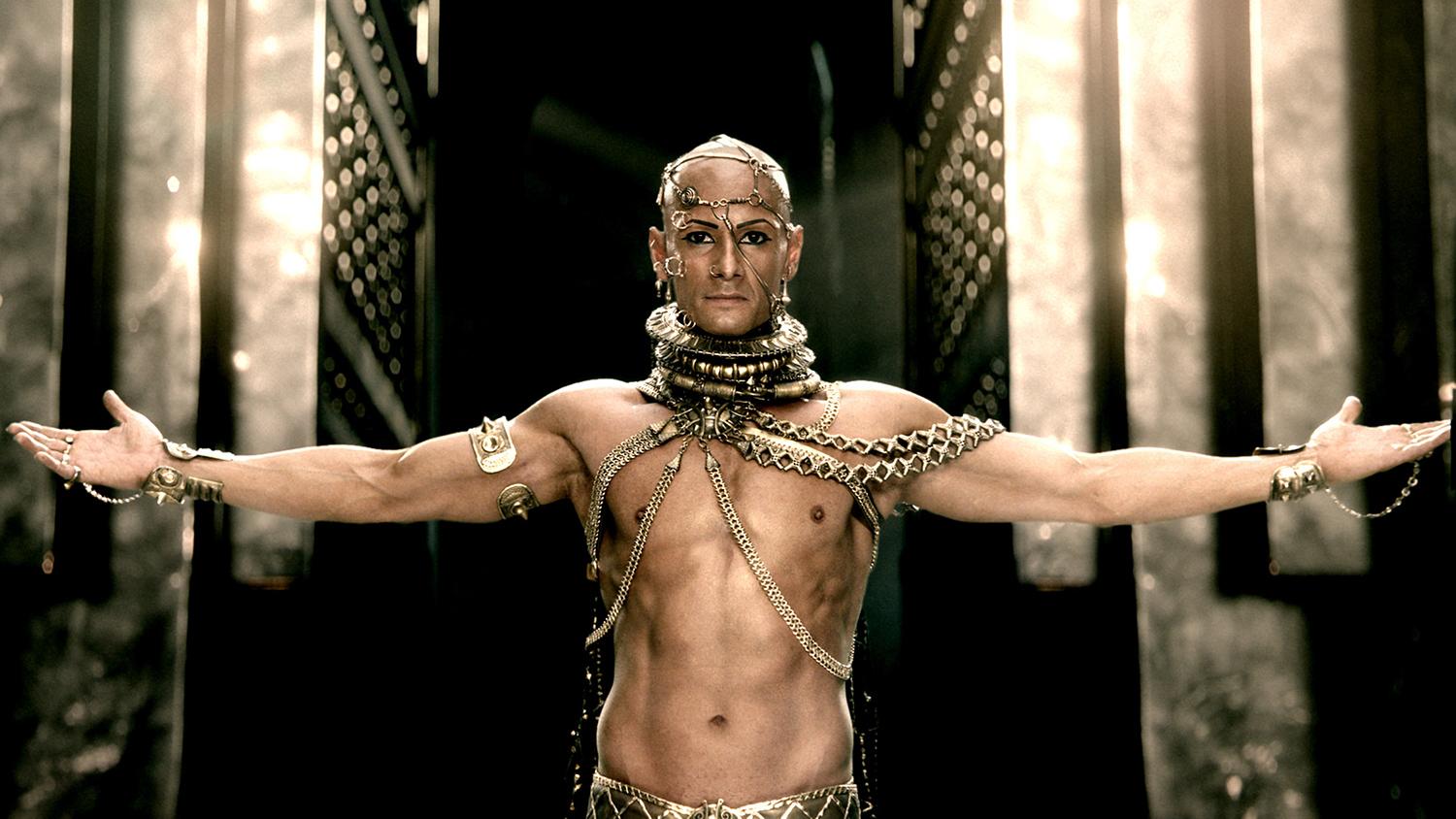Say what you will about Zack Snyder’s 300 – and there could be entire psychoanalytical studies written about that film – but you can’t deny that it was visually striking. Despite Snyder handing over the directorial reigns on the sequel to Noam Murro (Smart People) and contenting himself with co-writing and executive producer duties, that sharp visual style remains in the sequel, 300: Rise of an Empire. So too do many of the flaws that Snyder’s detractors are becoming familiar with.
Rise of an Empire takes place before, during, and after the events depicted in 2007’s 300. King Leonidas and his troops lay dead at Thermopylae, and the Persian army, led by King Xerxes (Rodrigo Santoro) continues to threaten Greece with an overwhelming ground and sea force. Chronologically though, the film starts 10 years earlier, when a Greek soldier named Themistocles (Sullivan Stapleton) kills the Persian king Darius, and inadvertently sets young Xerses on the road to vengeance.
The highlight of Rise of an Empire is the action.
While the story is somewhat convoluted, the highlight of Rise of an Empire is the action.
Murro follows Snyder’s playbook, infusing scenes with a mixture of slow-mo and close ups in a single shot. During the bloody moments – and there are many – that slowdown effect is also used to over-accentuate the spray of blood, which often comes out like a geyser, making it borderline parody. It defuses any sense of horror the audience may be feeling from watching people butchered on screen with body parts flying everywhere, and allows them to cheer the brutality in what is essentially the middle part of an ongoing war. (Don’t be surprised to see a sequel, box-office permitting.)
Rise of an Empire is appropriately unapologetic in its violence, offering plenty of scenes of stylized carnage in keeping with its predecessor. The blood and guts approach is strengthened by a fitting soundtrack from Junkie XL that helps set the tone of the battles as equal parts epic and hopeless. The style isn’t for everyone, but those that aren’t dissuaded by a bit of the old ultra-violence will appreciate it here. When the film slows down and moves into the character-driven territory though, the flaws appear.
Stapleton’s Themistocles is a much different character from Gerard Butler’s Spartan King. Leonidas was gregarious and larger than life, which fit with the general tone of the movie. All the Spartans carried a swagger that armored them where loin clothes apparently could not. It gave them all an identity, even when the action quickly swallowed them up.
[Themistocles] is the center of the film, and a hollow one at that.
Themistocles doesn’t have a character arc or any endearing quirks for the audience to cheer for. He begins as a one-dimensional warrior, and the film ends on the same note. You learn very little about him, nor will you care. There are even moments when the enemy repeatedly refers to Themistocles as a tactical genius thanks to the earlier battles in the film, but those same battles are generally as simple as the Greeks kill more Persians. As far as tactical genius goes, the character never earns that honor in the eyes of the audience. He is the center of the film, and a hollow one at that.
That lack of personality haunts the film throughout. The Greek soldiers under Themistocles match the Spartans ab for ab in looks, but they lack any spark personality, and are little more than background.

There is a meager attempt to introduce a father and son that have a nonsensical personal conflict and a forced emotional moment, before being promptly forgotten. Another Greek, Aesyklos (Hans Matheson), is equally forgotten after a film’s worth of irrelevance. He’s there so Themistocles has someone to unload exposition on, then he disappears. If you walk out of the theater knowing more than three or four of the characters’ names throughout the entire movie, consider yourself well ahead of the curve.
The exception to this is Eva Green’s Artemisia, a ruthless Greek-born naval commander that fights with Xerxes and the Persians. Green dominates each and every scene she is in, and has a far more interesting personal story to work with than anyone else in the film, beginning with her mistreatment at the hands of the Greeks that put her on the path to fighting them. Artemisia is a complex villain that you almost want to root for, and that complexity, paired with a solid performance from Green, makes her shine like a beacon.
Lack of personality haunts the film throughout
Part of the muted feel of the characters comes from the muted look of the film. Like its predecessor, Rise of an Empire was shot almost entirely against bluescreens before several layers of CGI were added to create the world around the performers. It gives the film an ethereal look, but it also creates a few issues.
The Spartans in 300 (and in the original comic) wore bright red capes because it created a sharp visual contrast that added color to a desaturated world. That isn’t the case in Rise of an Empire, and the bronze color scheme frequently overwhelms. Accentuated lighting further accentuates the visual style, with piercing rays of sunlight that stand out against the drab and largely colorless backgrounds, leaving entire armies silhouetted in darkness. This style needs a balance to attract the eye, and that’s missing in Rise of an Empire. It’s a drab and uniform look that is screaming for the barest flashes of color.
Conclusion
300: Rise of an Empire is at its best when the action dominates, but the rest of the film is hollow and cold, due mostly to a lack of character development and personality and an under developed visual style. Rise of an Empire feels like a copy of a flawed film, and those flaws are more apparent now than ever.
(Images and video © Warner Bros Pictures)






